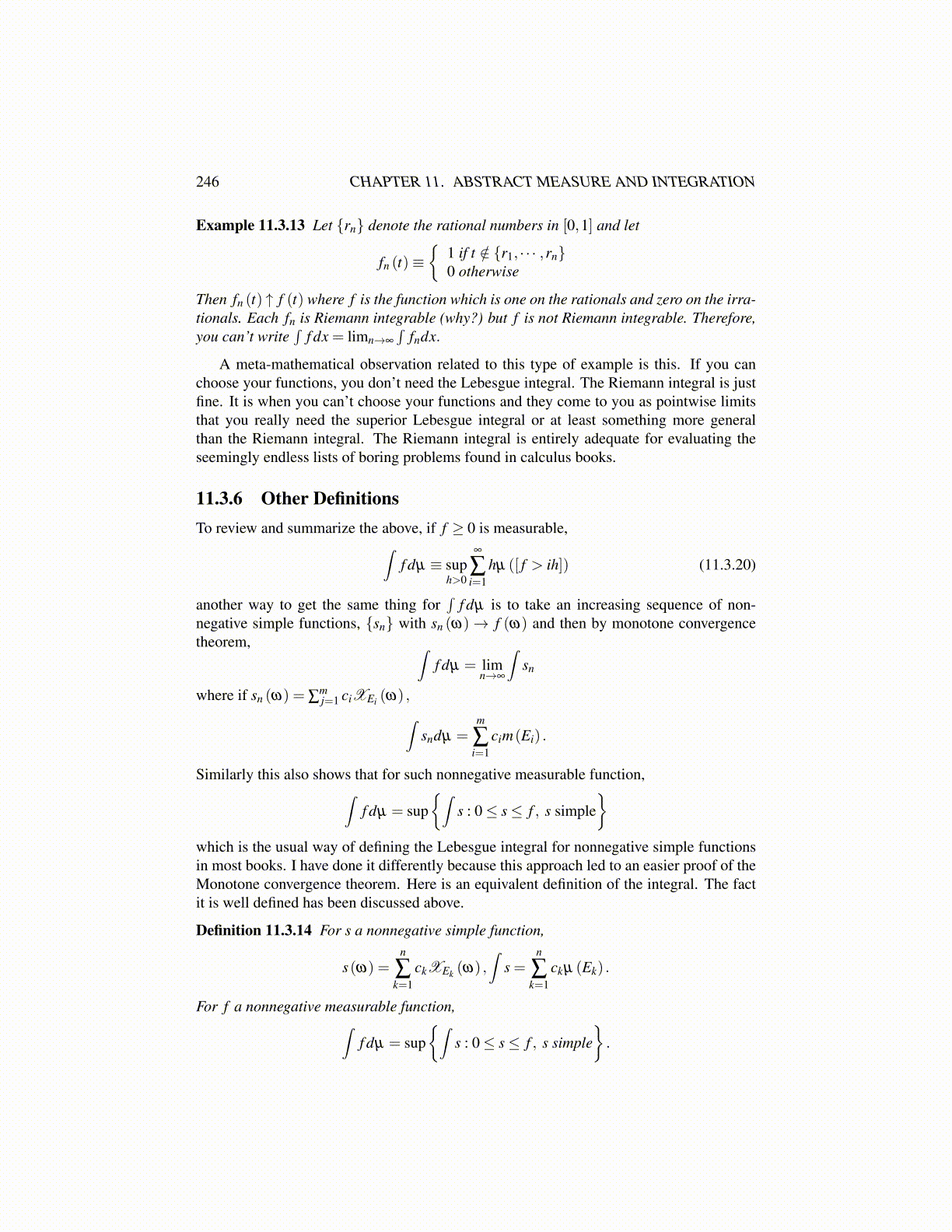
246 CHAPTER 11. ABSTRACT MEASURE AND INTEGRATION
Example 11.3.13 Let {rn} denote the rational numbers in [0,1] and let
fn (t)≡{
1 if t /∈ {r1, · · · ,rn}0 otherwise
Then fn (t) ↑ f (t) where f is the function which is one on the rationals and zero on the irra-tionals. Each fn is Riemann integrable (why?) but f is not Riemann integrable. Therefore,you can’t write
∫f dx = limn→∞
∫fndx.
A meta-mathematical observation related to this type of example is this. If you canchoose your functions, you don’t need the Lebesgue integral. The Riemann integral is justfine. It is when you can’t choose your functions and they come to you as pointwise limitsthat you really need the superior Lebesgue integral or at least something more generalthan the Riemann integral. The Riemann integral is entirely adequate for evaluating theseemingly endless lists of boring problems found in calculus books.
11.3.6 Other DefinitionsTo review and summarize the above, if f ≥ 0 is measurable,∫
f dµ ≡ suph>0
∞
∑i=1
hµ ([ f > ih]) (11.3.20)
another way to get the same thing for∫
f dµ is to take an increasing sequence of non-negative simple functions, {sn} with sn (ω)→ f (ω) and then by monotone convergencetheorem, ∫
f dµ = limn→∞
∫sn
where if sn (ω) = ∑mj=1 ciXEi (ω) ,∫
sndµ =m
∑i=1
cim(Ei) .
Similarly this also shows that for such nonnegative measurable function,∫f dµ = sup
{∫s : 0≤ s≤ f , s simple
}which is the usual way of defining the Lebesgue integral for nonnegative simple functionsin most books. I have done it differently because this approach led to an easier proof of theMonotone convergence theorem. Here is an equivalent definition of the integral. The factit is well defined has been discussed above.
Definition 11.3.14 For s a nonnegative simple function,
s(ω) =n
∑k=1
ckXEk (ω) ,∫
s =n
∑k=1
ckµ (Ek) .
For f a nonnegative measurable function,∫f dµ = sup
{∫s : 0≤ s≤ f , s simple
}.